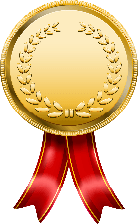Pharmaceutical Manufacturing Primer

- Level: Intermediate
- CPE: 1.0 Credits
- Time: 45 Minutes
- Price: $190.00 for 1 year
Pharmaceutical Manufacturing Primer introduces the sequential stages involved in small molecule drug production, emphasizing the purpose and rationale behind each step. From chemical synthesis and purification to formulation and packaging, understand the manufacturing decisions and regulatory steps that impact cost, quality, and speed to market.
- Learn the steps of small molecule drug production and their effect on cost, timelines, and product quality
- Gain insight into quality control and quality assurance considerations to ensure regulatory compliance
- Learn key anti-counterfeiting strategies in pharmaceutical distribution to maximize ROI
- Best Value: Unlimited Learning
- Purchase Single Course
Choose your subscription and start exploring a rich library of expert led, on-demand biotech training.
- Up to 12-month unlimited access
- Content designed for all skill levels: Beginner to Advanced
- CPE credits included with every course
- Learn at your own pace
- Choose the subscription plan that fits your goals
Get full access to this course with a one time purchase.
- 1-year access to all course material
- CPE credits included
- No subscription required
- Self-paced and on-demand
- Ideal for focused, one-off learning
- Overview
- Agenda
- Features
- Justify This Training
- FAQ
Watch Trailer
Agenda
- Chemical Synthesis
Outlines the types of reactions used to synthesize the active pharmaceutical ingredients (API).
- Purification
Explains the purpose of each API purification method and how supplier validation ensures the quality of manufacturing.
- Formulation
Lists the key formulation goals and the characteristics of the four most common pharmaceutical formulations.
- Packaging
Highlights key regulations and strategies in pharmaceutical packaging and chain supply.
Features
- Closed Captioning in English, Spanish, French, French Canadian, Hindi, Japanese, Korean, Mandarin, Russian, Standard Arabic
- Transcripts in English, Spanish, French, French Canadian, Hindi, Japanese, Korean, Mandarin, Russian, Standard Arabic
- Course materials
- Real-time tracking
- Progress reporting
- Accessibility features
- Corporate account upgrades
- LinkedIn certificate attachment
- Verified certificates
Justify This Training
View our “Justify This Training” checklist and letter to craft a persuasive request that clearly shows the value of Biotech Primer training to your role and your company. This step-by-step guide helps you highlight ROI, align with business goals, and increase your chances of getting this course approved.
FAQ
Our Executive  Certifications
Certifications
Cannot make our live class? Consider one of our Executive Certifications.

Drug Development Executive Certification
- CPE:13.50 Credits
- Time:10.5 Hours
- Total:12 Courses

Drug Manufacturing Executive Certification
- CPE:14.50 Credits
- Time:10 Hours
- Total:11 Courses






 Certifications
Certifications

